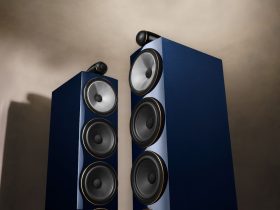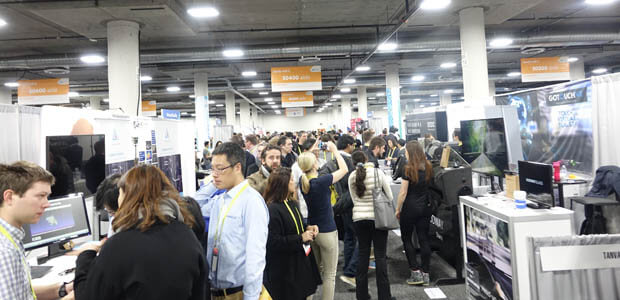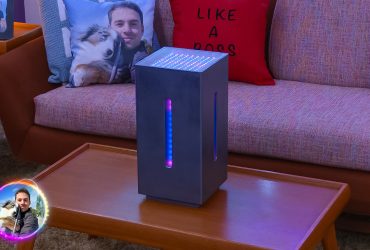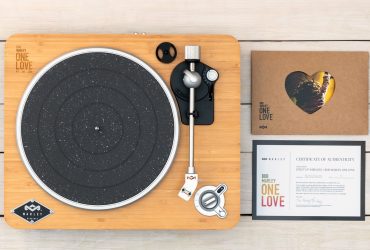By Christine Persaud
One of my favourite areas to visit at CES every year is the Eureka Park exhibits, which feature innovative and exciting new inventions from start-ups from around the world. It can be overwhelming to sift through and find the hidden gems. But we located a few really interesting ones.
Nemeio Keyboard
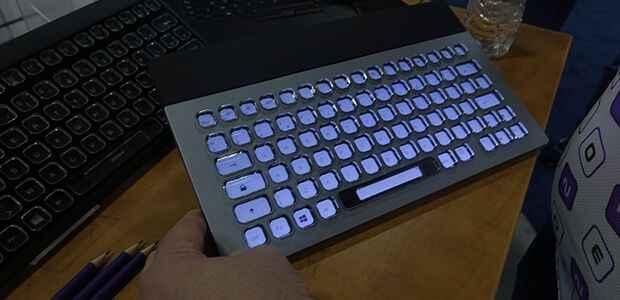
This clever keyboard, designed in France, has innovative customizable e-ink keys that can switch to different languages, customized keyboards based on your preferred shortcuts, specific keys for applications like Photoshop, and more. Everything is managed using the free included software that lets you select which keyboard you want to use at which time. Switch from English to French, for example, and the keys will adjust within seconds of changing the settings in the software. They are still working on the final design and making sure the keys are comfortable for typing. But the goal is to launch some time in June. It’s ideal for international businesses or those who work in different languages or spend a lot of time with specific programs like Photoshop or want to have their own specific hot keys. It works with both Mac and PCs as well as smartphones and tablets. Connect it via the USB plug or use it wirelessly via Bluetooth.
Scoocase
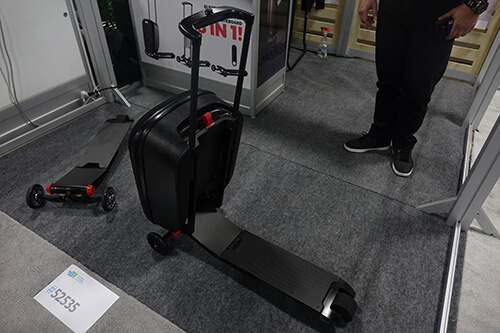
We’ve seen ride-on luggage, and in a previous post, I showed luggage that can follow you around the airport through a wireless connection to a remote control bracelet. At Eureka Park, the Scoocase showed another innovative way to reimagine the suitcase. It’s luggage that has a pull-out device that allows you to use it like a scooter or skateboard. It comes with a built-in electric motor and steering system. Just pull out the skateboard/scooter, step aboard, press a button, and go. It has an ergonomic handle for easy maneuvering and works with an app to keep track of your location and the battery. Inside, the suitcase has a laptop compartment and different sections for organizing your clothing, toiletries, shoes, and other items for a short business trip. It measures 22 x 9 x 16, allowing it to be used as carry-on for most airlines. It can reach speeds of up to 15 mph and can go up to 15 miles before it needs a recharge, which takes about 40 minutes to get to about 80%. It doesn’t come cheap, though, at about U$1,500.
Heatbox Lunchbox
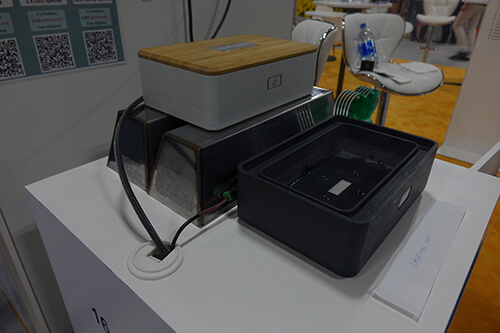
We wrote about this lunchbox from a Dutch start-up as one of the most bizarre CES pitcheswe had received prior to the show. And in Eureka Park, we got to see it in person. It is, as the name implies, a self-heating lunchbox that can steam cook food inside of it so you can have hot lunches on the go without having to buy take-out or use a microwave. Place the food inside a dedicated compartment and cover it with the included cover. When you’re ready to cook, add some water to the bottom, remove the inside cover and close the wooden box. Press a button in the app and wait as your food cooks. You can heat up to three meals per charge. It’s a great way to encourage healthier eating, money saving, and avoding the use of microwaves for those who don’t like to do so.
Moodbeam One Smart Bracelet
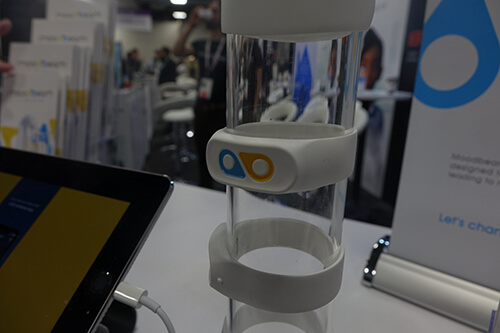
Hailing from the U.K., this smart bracelet is actually more simple than smart, but it provides an interesting way for you to get an idea of how you feel on a daily basis. It has two buttons: one to press when you’re feeling bad, sad, angry, or any other negative mood and one to press when you’re feeling positive. You can then visit the app to get a feel for how you feel on a daily basis. When do you feel most upset? When are you at your best? Do any patterns emerge? It does also track steps and sleep, but the main focus of this device is to provide some insight into your moods on a daily basis so you can take proactive steps to make positive changes. You can record your mood whenever you like or set a reminder so it vibrates at different times to prompt you to press the blue (negative)or yellow (positive) button. It will sell for about US$60.
Ohsnap Phone Grip
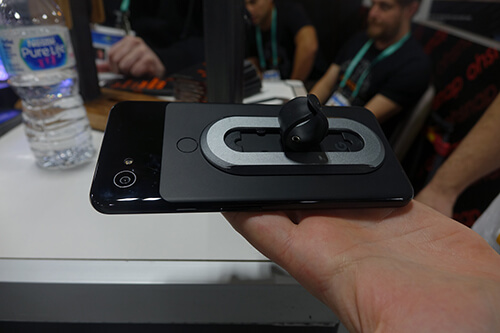
Dubbed “the phone grip that doesn’t suck,” this device is part of a new trend in products that attach to the backs of phones or phone cases to provide a better grip for walking about, talking, and taking selfies. Competing with the likes of Popsockets and Handl Sticks, it’s a magnetic grip that sits flat on the back of your phone. But press the centre to curl up both sides, connect them together, and you have a secure ring-shaped grip to hold your phone when you want it. It can also pop out and remain uncurled to function as a kickstand. And because it is magnetic, you can secure your phone to the fridge, workout machines, and even magnetic car grips for hands-free operation. Just slide the inside unit out when you need to wirelessly charge your phone and slide it back in when you’re done. You can rotate the phone while holding it with the grip to view content or take pics in landscape or portrait mode. And it has a neat slide feature as well so you can comfortably navigate websites or type messages while your finger is the grip. Slide it down, for example, to type in a web address at the top of the phone then slide down to instant message someone. Less than 3mm thin, it’s an unobtrusive addition to your phone. Currently on Kickstarter and having received more than US$400,000 in backing from close to 14,000 supporters, the case is estimated for delivery in October/November and those who pledge US$25 will receive one; US$35 or more will get you a two-pack.
Bzigo Mosquito Detection Device
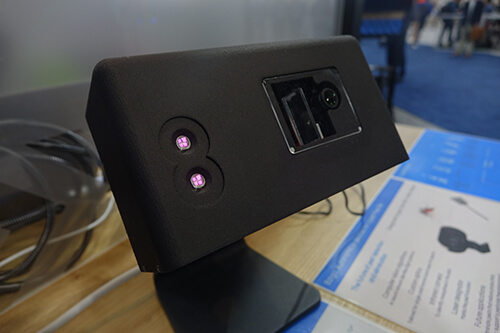
Isn’t it super annoying when you open your back door in the summer and a pesky mosquito somehow makes its way in? You’ll spend the next half an hour trying to track it down and clap it between your hands or whack it with a fly swatter to get rid of it. This device is designed to detect a mosquito so you can find its location and kill it. Once it finds the pesky pest, it will send you a smartphone notification and mark it with a laser pointer. It uses an infrared LED, hi-res wide camera, custom optiocs, and a processor. Its computer vision algorithms can differentiate between a mosquito and other pixel-size signals like dust or sensor noise by analyzing movement patterns. The company says it will likely sell the Bzigo bundled with a handheld zapper so you can both locate and zap a mosquito at the same time. Right now, it is in the working prototype stage and the Israeli company says the device can accurately detect a mosquito within minutes of it entering a room, at a distance of up to 26 feet away. The hope is to bring the product to market some time in 2021 at an estimated price of US$169. Are mosquitoes in the home that big of an issue? And is pinpointing them really effective enough? What are the chances the mosquito will have flown away by the time you get the zapper or swatter and try to kill it? Nonetheless, it’s an interesting concept. And the next-generation device the company has on its mind is one that will both detect and eliminate the mosquito so you can rest easy.

